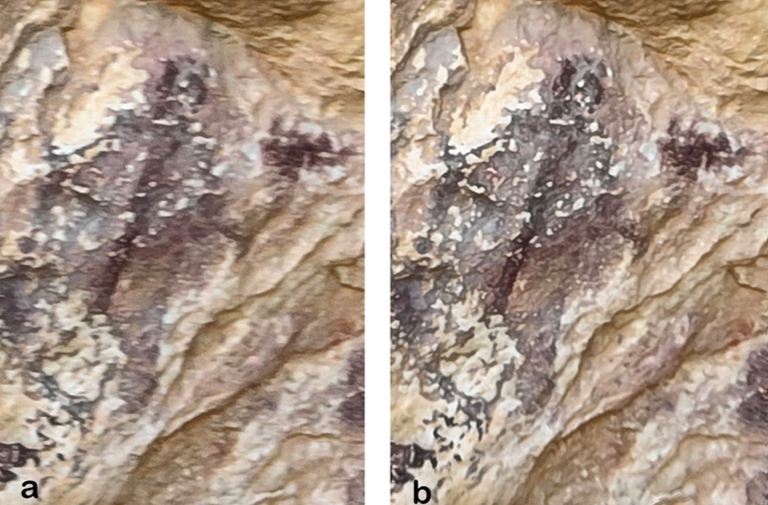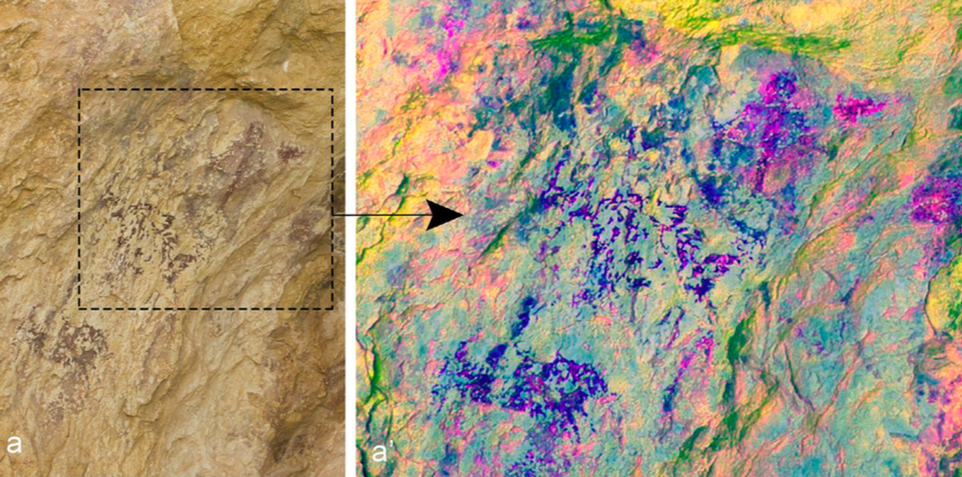Over the past 40 years, hiking in rough terrain has been an integral part of the research of archaeologists at the University of Alicante. The mountains around Alicante and Valencia are full of prehistoric cave paintings and the only way to get there was on foot. Or so they thought.
Javier Fernandez Molina, researcher in geo-archaeology, wanted to try something new: equip drones with cameras. He is a licensed drone pilot and thought this would be a quick way to survey hard-to-reach caves. On their first aerial foray, the team entered 18 caves, two of which contained prehistoric cave paintings dating back 7,000 years.
“There are many inaccessible areas in the mountains of Alicante. Using a drone to photograph the walls is a quick method and this recent discovery means there are many prehistoric cave paintings to be found,” Molina told Artnet News, noting that our distant ancestors likely created structures. scaffolding to reach some of the caves.

Human figures painted on a cave wall captured by drone photography. Photo courtesy of University of Alicante.
Raw photos of the caves were analyzed and enlarged in Photoshop, revealing precisely what the team had hoped for. In the first cave, located in a ravine in Le Castellet-Barranc del Salt, there was a scene of figures about four inches tall, including archers, stags and goats, some with arrowheads. In the second, there were similar paintings, but in less good condition.
Researchers believe this is a groundbreaking discovery that will shed light on how rock painting styles evolved in the region. Exploration in the area has continued since the 1980s, with today’s archaeologists relying on the work of local researchers Mauro Hernández, Pere Ferrer and Enric Catalá who published the authoritative text on prehistoric rock art in Alicante.

Paintings of humans and animals measuring approximately four inches captured by drone photography. Photo courtesy of University of Alicante.

Paintings captured by drone photography. Photo courtesy of University of Alicante.
Although drones are used with increase in frequency in field archaeology, this is one of the earliest instances where they are deployed to hunt cave paintings. The team hopes to use its findings, which were published in the scientific journal lucentumto apply to the regional cultural heritage authorities for a permit to study the area more rigorously.
“This is just the beginning,” Virginia Gonzalez told Artnet News. “Once we get the permits, we will start the documentation work in the first cave. The idea is to extend the search to other nearby areas that are difficult to access.
Follow Artnet News on Facebook:
Want to stay one step ahead of the art world? Subscribe to our newsletter to receive breaking news, revealing interviews and incisive reviews that move the conversation forward.
